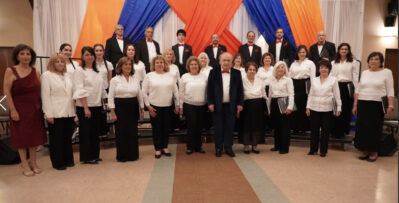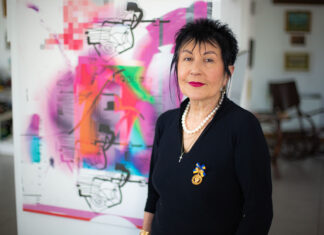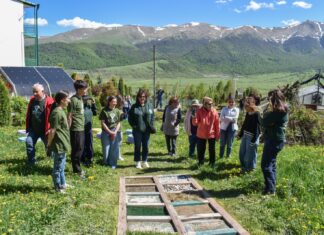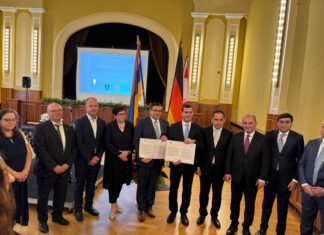WATERTOWN — Shushanik Mirzakhanyan, director of the National Cinema Center of Armenia (NCCA), visited Boston in April, as part of the Boston Armenian Film Festival organized by the Amaras Art Alliance of Massachusetts together with the NCCA. A film producer, lecturer at the Yerevan State Institute of Theater and Cinematography and managing director of the Hayk documentary film studio NGO, Mirzakhanyan spoke with the Mirror-Spectator about the work of the NCCA and the state of film in Armenia today.

Shortly after the interview, on May 2, the Armenian government decided to reorganize the NCCA as the Cinema Foundation of Armenia (CFA). It then appointed an interim acting director, Davit Banuchyan, in place of Mirzakhanyan, and on July 24, the Minister of Education, Science, Culture, and Sports Zhanna Andreasyan and Deputy Minister Daniel Danielyan visited the CFA to introduce Banuchyan to the staff. This article consequently only concerns the activities of the NCCA prior to this new appointment and any changes that might be forthcoming.
As Minister Andreasyan remarked to the CFA staff on July 24, “We are at a very important stage with you now. Several secondary legislative acts [regulations] are at different stages of discussion and circulation. They will increase the scope and functions of your work. In that sense, the foundation needs a certain period of time in order to make reassessments, understand what the higher priority steps are to be taken in the near future, and what kind of results should be recorded under the new legislative conditions.”
NCCA Financed Films
Mirzakhanyan, a graduate of the Moscow Film Institute, prominent in the Soviet era, has worked for more than 40 years in the field of film, starting with film production, and has worked as an assistant director and then director of films. In mid-2017 she left her position as director of the Armenian Film Studio to become NCCA director, and implemented many changes. NCCA was a legal successor to the famed Soviet-era ArmenFilm (HayFilm) studio, founded in 1923. ArmenFilm was sold to private investors Gerard Cafesjian and Bagrat Sargsyan in 2005, who renamed it as CS Film Studios. Meanwhile, the Armenian government created NCCA in 2006 as a state nonprofit organization under the umbrella of the Ministry of Education and Science. In 2015, the Armenian government reclaimed the CS Film Studio’s assets, claiming the latter failed to refurbish and revitalize the studio as required in the sale, and turned it into NCCA.
Mirzakhanyan said that the NCCA staff was not a large one, with 21 people working at the Henrik Malyan Theater, which presents productions in the style of Malyan, and 60 people in the rest of NCCA, which is around 80 altogether. Of course, she interjected, this does not include the many people outside of the organization with which NCCA cooperates. Its yearly budget for film production was 130 million dram four years ago, while in the last two years this was raised to around 380 million dram. The film restoration budget for many years fluctuated between 2 ½ and 3 million dram, but for the second year now it is around 80 million dram. Mirzakhanyan said that the government, seeing the success of NCCA’s earlier projects, decided to increase its budget.











